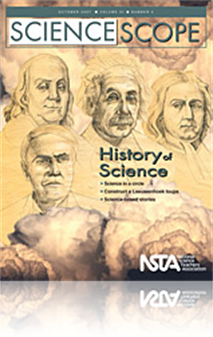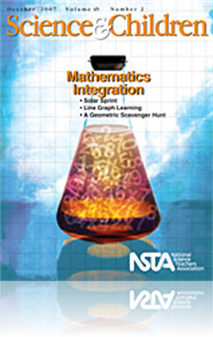All Resources
Journal Article
Modeling Leeuwenhoek’s Tools With Disposable-Camera Microscopes
When students design and build their own versions of instruments, they appreciate them more—and are more likely to appreciate how experimentation plays a critical role in explaining the world around them (NRC 1999). In this activity, students learn...
Journal Article
Idea Bank: Demonstrating the Self-Assembly of the Cell Membrane
Although the cell membrane is a complex structure, its basic form, and the self-organizing behavior of the molecules that produce it, can be easily simulated in a high school science classroom. One such simulation, described in this article, uses oil...
Journal Article
Scope on the Skies: Focus on Uranus
It wasn’t until 1781, when William Herschel aimed his six-inch reflecting telescope toward the skies, that our solar system quite literally doubled in size with his discovery of another planet—Uranus. In this month’s column, you’ll learn abou...
Journal Article
Editor’s Roundtable: Don’t know much about history? You should!
We should each examine our curriculum to make sure that we give ample time to the teaching of the history and nature of science. This issue of Science Scope contains a collection of activities and projects, both inquiry- and interdisciplinary-based...
Journal Article
Teaching Through Trade Books: Going Wild With Graphs
Just as words can tell a story, so can graphs. Pick up a newspaper or magazine and you will probably see several articles accompanied by graphs. Graphs are useful because they communicate information visually and can usually be read more quickly than...
Journal Article
Science Sampler: Weaving women into the science curriculum
Learning about great women in the sciences has the potential to impact mid-level students in a number of ways. These women and their work may serve as important role models, providing encouragement to younger female students. In addition, the stories...
Journal Article
What’s in a Word? How Word Choice Can Develop (Mis)conceptions About the Nature of Science
Despite over 10 years of reform efforts, research still shows that students typically have inadequate conceptions of what science is and what scientists do (McComas 2004; Lederman 2007). Many science students, as well as some teachers, use a single �...





